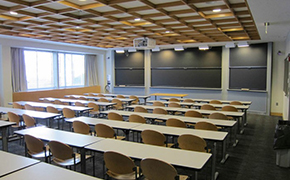Instructor Insights pages are part of the OCW Educator initiative, which seeks to enhance the value of OCW for educators.
Course Overview
This page focuses on the course WGS.640 Gender, Race, and the Construction of the American West as it was taught by Prof. Karen Hansen (Brandeis University), Prof. Marilynn Johnson (Boston College), and Prof. Lois Rudnick (UMass Boston) in Fall 2014.
This course explores how gender shaped the historical experiences and cultural productions in the North American West during the time it was being explored, settled, and imagined.
This course was a part of the Graduate Consortium in Women’s Studies.
Course Outcomes
Course Goals for Students
- Gain an in-depth understanding of the multiple factors—social, economic, and political—that were instrumental in affecting the ways that gender shaped the historical experiences and cultural productions of the North American West during the time it was being explored, settled, and imagined.
- Use primary and secondary sources to examine gender identity and practices across racial-ethnic groups, geographic region, local economies, and class lines.
Instructor Insights
[The students] were supportive, inquisitive, energetic, and intensely engaged in the work at hand, which created a genuine and substantial collegial engagement among us all.
—Lois Rudnick
Below, Prof. Karen Hansen, Prof. Marilynn Johnson, and Prof. Lois Rudnick describe various aspects of how they taught WGS.640 Gender, Race, and the Construction of the American West.
Organizing Class Sessions to Include both Lectures and Student-led Discussions
We organized our class sessions into lecture and discussion segments. Each session began with a lecture that provided background and context to introduce the week’s reading and present the conceptual frameworks used to focus our subsequent discussions of the assigned texts. Our lectures typically lasted 30 to 45 minutes and were prepared in conjunction with questions crafted by student discussion leaders. Each week, two students were paired to be discussion leaders. We asked them to circulate questions to their fellow students and us 24 hours before class.
Because of our class size, each student was a discussion leader approximately twice. Most pairs did exceedingly well in using what was sometimes more than half the class time leading these discussions. While we did contribute, only infrequently did we have to intervene to keep the discussions going, as the camaraderie of the students was excellent. They were supportive, inquisitive, energetic, and intensely engaged in the work at hand, which created a genuine and substantial collegial engagement among us all.
Assignments and Feedback
Students were responsible for preparing discussion questions during the weeks they were discussion leaders. At the beginning of the course, we provided students with guidance on what factors helped to enable fruitful discussions. In some cases, students sent us a draft of their questions ahead of time and we gave feedback that enhanced their presentation.
In terms of written assignments, students worked towards a final project (15-20 page essay, literature review, or annotated curriculum unit) throughout the semester. They first submitted a proposal and tentative bibliography halfway through the course, then wrote a 5-7 page draft (of any portion of their paper, not necessarily the first part) and received feedback from two of us, before submitting the final paper a few days after our last class session. Each paper was read and commented on by two of us, and no grades were given until the very end.
Pedagogical Challenges
The biggest challenge we faced in teaching this class was the range of student skills and abilities. Our discussions were improved by the diversity of academic backgrounds and approaches of our students, but a couple of students did appear less sure of themselves and participated less frequently. We found that students clearly had gained confidence throughout the course and did better with their second experience as discussion leader, but our verbal feedback after their class discussions could have been more detailed in order to be more helpful.
Co-Teaching
The three of us have different academic backgrounds: Lois Rudnick in American Studies, Marilynn Johnson in U.S. History, and Karen Hansen in historical sociology. We each took primary responsibility for the readings in our areas of expertise, but we all participated each week in the discussions. We believe that having taught together before, revising the course, working to fix previous glitches, adding new up-to-date material, and the incredible trust, respect, and comfort level we had with one another, had a lot to do with our success.
Curriculum Information
Prerequisites
Students must apply to the Graduate Consortium in Women’s Studies.
Requirements Satisfied
H-Level Graduate Credit ![]()
Offered
WGS.640 is offered intermittently and is considered a special topics course about “Studies in Women’s Life Narratives.” The specific topic changes every time it is taught.
Assessment
The students' grades were based on the following activities:
 40% Class participation
40% Class participation 60% Research paper
60% Research paperRead more of the instructors' thoughts on assessing assignments and providing feedback below.
Student Information

Breakdown by Year
Roughly 1/2 master’s-level students and 1/2 doctoral students.
Typical Student Background
Students came from a wide variety of academic backgrounds—political science, history, sociology, literature, visual and cultural studies, art history—which created a wonderfully rich interdisciplinary set of perspectives on the materials studied.
Enrollment Cap
Each seminar in the Graduate Consortium of Women’s Studies is limited to 20 students.
Ideal Class Size
Around 10 to 15 students is the right size for this class. Ten students might be on the small size, but this year the students were so strong, as a whole, that the discussion was still thorough and robust.
During an average week, students were expected to spend 12 hours on the course, roughly divided as follows:
In Class
- Met 1 time per week for 3 hours per session; 13 sessions total; mandatory attendance.
- Class time was divided between lectures and student-facilitated discussions.
Out of Class
Students spent their out-of-class time completing the weekly assigned readings and viewings, preparing discussion questions for their presentations, and working on their final projects.
Semester Breakdown
| WEEK | M | T | W | Th | F |
|---|---|---|---|---|---|
| 1 |  |  |  |  |  |
| 2 |  |  |  |  |  |
| 3 |  |  |  |  |  |
| 4 |  |  |  |  |  |
| 5 |  |  |  |  |  |
| 6 |  |  |  |  |  |
| 7 |  |  |  |  |  |
| 8 |  |  |  |  |  |
| 9 |  |  |  |  |  |
| 10 |  |  |  |  |  |
| 11 |  |  |  |  |  |
| 12 |  |  |  |  |  |
| 13 |  |  |  |  |  |
| 14 |  |  |  |  |  |
| 15 |  |  |  |  |  |
| 16 |  |  |  |  |  |
 No classes throughout MIT
No classes throughout MIT Class session
Class session Assignment due date
Assignment due date No class session scheduled
No class session scheduled Film watched in class
Film watched in class

 Room 1 of 1
Room 1 of 1 